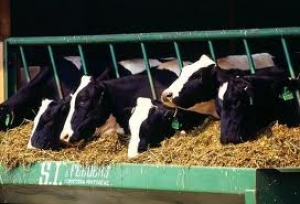Dairy Experts

“The hot summer months of July and August are when we see most of our anthrax cases in the upper Great Plains,” says Charlie Stoltenow, North Dakota State University Extension Service veterinarian. “Cattle should have been vaccinated before they were turned out into the pasture.”
Vaccination is especially important for livestock in areas with a history of anthrax, he adds.
While the disease mainly has been reported in northeastern, southeastern and south-central North Dakota, it has been found in almost every part of the state, according to state animal health officials. Cases of the disease occur in the region almost every year.
Anthrax spores are a major concern because they can survive in the soil for decades. Favorable conditions, such as the flooding and heavy rainfall that some parts of North Dakota experienced in the last few years, may make it more widespread.
Livestock in areas where anthrax has been found should be vaccinated about four weeks before the disease usually appears. Herds within six miles of a prior case of anthrax also should be vaccinated, especially in years with wet spring weather and/or flooding. Because immunity appears to wane after about six months, livestock need to be vaccinated for anthrax annually, Mr Stoltenow says.
Only one anthrax vaccine is licensed for use in the US and Canada. It is effective, Mr Stoltenow says.
He recommends producers check with their veterinarian to make sure their livestock’s vaccination schedule is adequate and the vaccination is up to date.
If anthrax is detected in a herd, producers should move the herd immediately to a new pasture away from where dead animals were found to prevent other animals from getting infected, Mr Stoltenow says.
During severe outbreak conditions, animals that haven’t been vaccinated and are exposed to anthrax may have to be treated with antibiotics and then vaccinated. Producers thinking about treating with antibiotics should contact their veterinarian because antibiotics decrease the effectiveness of the vaccine, Mr Stoltenow says.
Producers also should monitor their herds for unexpected deaths and report those losses to their veterinarian.
Because anthrax also is a risk to humans, people should not move a carcase. The carcases of animals that died from anthrax should be disposed of, preferably through burning, as close to where they died as possible. Any contaminated soil should be piled on top of the carcasses for burning, Mr Stoltenow says.























